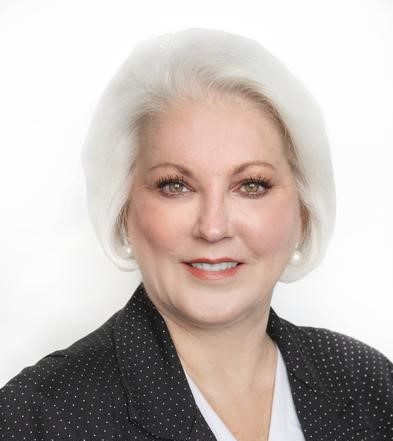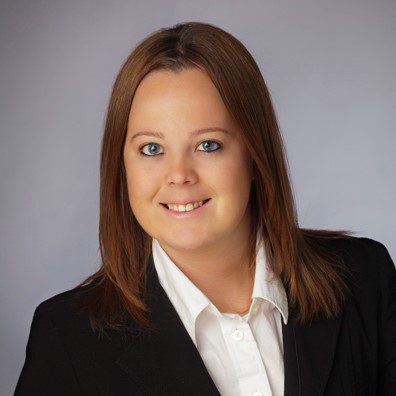Louise S. Dunn
Snowgoose Veterinary Management Consulting
1955 Indian Wells Trails
Pfafftown, NC 27404
336-945-0208
snogoose@infionline.net
www.snowgoosevet.com
| DESCRIPTION:We have all said it, “getting the most bang for the buck” when talking about something we are spending our money on. How does your practice deliver “the most bang for the buck?” To put it another way, how does your practice enhance the client experience at every visit? This session will define what the term “value” means to today’s client and how you can deliver something your clients value. Consistent, exceptional client service must be an important part of your business. |
LEARNING OBJECTIVES:
- Be able to identify what clients need for exceptional service.
- You will be able to fix service casualties.
- Client experience will be met consistently.
When you go to a restaurant, what would make you submit a response about the service online? Do you have a favorite physician? Do you shop at Wal-Mart or Nordstrom? What kind of experience do you have at these different establishments? Did you feel you received value for the money you spent? Which one gave you a “bang for your buck?” What did the establishment do to make you have an awesome experience and want to return or make referrals to them?
Here is a decisive moment for you – how would you compare your practice to your favorite restaurant, dentist, clothing store or grocery store? This is not as crazy as it sounds – your competition is anyone you are compared to. Whom are your clients comparing you to? What do your clients value and therefore expect you to deliver? Are your clients having a positive service experience at your practice compared to other businesses they frequent
ID What Your Clients Need
Depending on whom they compare you to tells you something about what your clients look for regarding exceptional service. Some clients are interested in low cost, convenience, or quick service. Others are interested in partnerships in pet care or emotional connections no matter the cost. Now this can be a difficult thing to find out. The only way to get this information is to ask – ask your clients, survey them, listen to their comments and complaints.
Whether we can put it into words or explain by giving an example – most of us, including your clients, want to have a memorable event, an experience that engages us on three levels: emotional, intellectual and spiritual (Lee). Going back to your favorite restaurant (or physician or clothing store), what story do you repeat to your friends about the excellent service you received? Most likely, it is about a time you were treated as a unique and special individual. They remembered your name, what you liked, made a special accommodation for you. Their action made it memorable and of high value to you. To achieve this in your veterinary practice, you must customize your services and procedures to give each client their “experience.”
This may sound daunting – how can you give each and every client their own, unique and memorable experience when you have a HBC on the way and you are short a tech due to a call-off? It boils down to this – your client is not just a nameless person. It is about a partnership or a relationship and how you treat (and value) that relationship. The fact that there is an emergency on its way and your techs are working a little short-handed does not override the fact that you value the client relationship enough to focus on that client standing in your practice.
Clients WANT to be empowered with information and clients DEMAND value according to Eric Garcia of Simply Done Tech Solutions, LLC. To help your team deliver on this consider the value of handing the client something tangible to take home, something about their unique pet and what the doctor examined or did that day – consider a patient report card. The report card is personalized to that individual pet, detail what was examined, findings of the examination and recommendations. Clients can take this back home, review the information with family members, and keep an ongoing medical file on their pet (handy if they travel or need to follow up on additional care).
Considering your interaction with your client as a partnership or a relationship changes your perspective – treating this as a special relationship (rather than client #20 today with a 60 lb. dog) makes it easier to discover what they need and expect because you have made it a priority. Your veterinary practice can use this mentality to create a client-centered / client-driven practice. There is one caveat, you cannot do this alone and you need to involve your team.
ID What Your Team Needs
Yes, you heard that correctly. Your team, the people you have placed front and center to meet, greet and treat. It is one thing to recognize the power of relationships with clients and operate a client-driven practice; it is an entirely higher level to recognize the power of how your employees are treated and how they impact client relationships (Irvine).
If you think about it, most of the negative experiences you had with a business were not with the brick and mortar of the building, nor with the product or service…but rather, with the employee you were directly communicating with. You most likely made a blanket statement afterwards, “that place is terrible, everyone is so rude.” (Even though you only met one employee, on just one occasion).
There is a fine balance between serving clients and creating a culture that puts the employee first (Irvine). As you explore all the ways to “wow” your clients and make their experience memorable, spend an equal amount of time exploring ways to make it easier for your team members to perform their jobs. Happy, engaged team members are more productive and they are better at providing services to your clients.
ID and Fix Casualties
Now that you view these relationships as a priority, you should feel a stronger desire to identify and fix service casualties. Service casualties are numerous and varied. From a simple “oops” to a major “dropped the ball” in a championship game during the final minute. Being able to ID these and fix those takes tenacity and soul searching on your part. It takes walking in your client’s shoes and having a desire to create a client-driven business, complete with memorable experiences. If you consider a service casualty as a simple “oops” and ignore it, you may be missing an opportunity to improve, grow and excel on a higher level.
Having a client-driven business means that many of your strategies are driven by client demands or expectations. It does not mean that you have handed over control to the clients, but it does mean that you are listening to your clients and adjusting your services according to what you hear. This strategic method not only affects the services you are offering; it will also affect scheduling your team and effectively using certain resources.
Take for instance a service casualty whereby your team did not call back a client as promised. Happens in any practice and may be brushed off as a simple “oops” – but you are striving for the complete client experience and giving value for the money they spend with you. How would you identify what your clients need? (Hint – it is not just the fact that they want a call from you. Maybe you should dig a little deeper and discover if they want a call, a text message, an email, or face time with you). In addition, what about the needs of the team? (Hint – don’t just throw more people on the schedule in the hopes that someone is freed up enough to make some phone calls! Maybe it is about setting up a SOP, training on the fine art of talking to clients, or identifying the right people for this type of task). Would it surprise you to find out that the person you expected to make the call is someone who is very awkward on the phone? That resources were used to schedule a person in a specific quiet time and place for making phone calls was needed? That clients nowadays want a text because they cannot be available for accepting phone calls? Information such as this can be invaluable in today’s market as you try to differentiate your practice from others. Paying attention to the needs of the clients and the needs of team results in being able to make changes that take care of the needs of the business – a Complete Circle of Care.
Achieving Consistent Excellence
A lost opportunity to ID and fix a service casualty translates into losing some clients, merely satisfying others and never achieving “every client, every time.” Failure to achieve “every” eventually erodes your reputation of providing exceptional medical service and building loyal clients – both being detrimental to having a successful and profitable business.
How does one achieve “every”? By identifying what is killing your client service, training your team better and melding together good medicine and good management. Think this is impossible? Consider an example from Zappos – this company seeks to control the entire client experience. They start by having great products, establishing a strategic plan (good medicine, good management), surveying their customers, hiring and training a great sales force (team training), sharing stories and rewarding employees who create positive client experiences (identifying what works for them and their clients). How is this achieved and kept at an “every” level? The company culture.
Creating the complete client experience is not about handing out some free gift or dropping balloons on every client who walks through the door. It means having a culture of “every.” It is about finding out what your clients value, what your team needs in order to deliver exceptional service, and making it a priority to make positive changes to every client, every visit, every time.
References
Garcia, E. Simply Done Tech Solutions, LLC. www.simplydonetechsolutions.com eric@simplydonetechsolutions.com
Irvine, D. The True Power of Treating employees Right? Customers Will Benefit Too. Talent Management. March 20, 2013. http://www.tlnt.com/2013/03/20/if-you-put-your-employees-first-your-customers-will-benefit-as-well/?utm_source=TLNT&utm_campaign=a50277a2f6-tlnt-daily-the-true-power-of-treating-employees&utm_medium=email#more-78738









